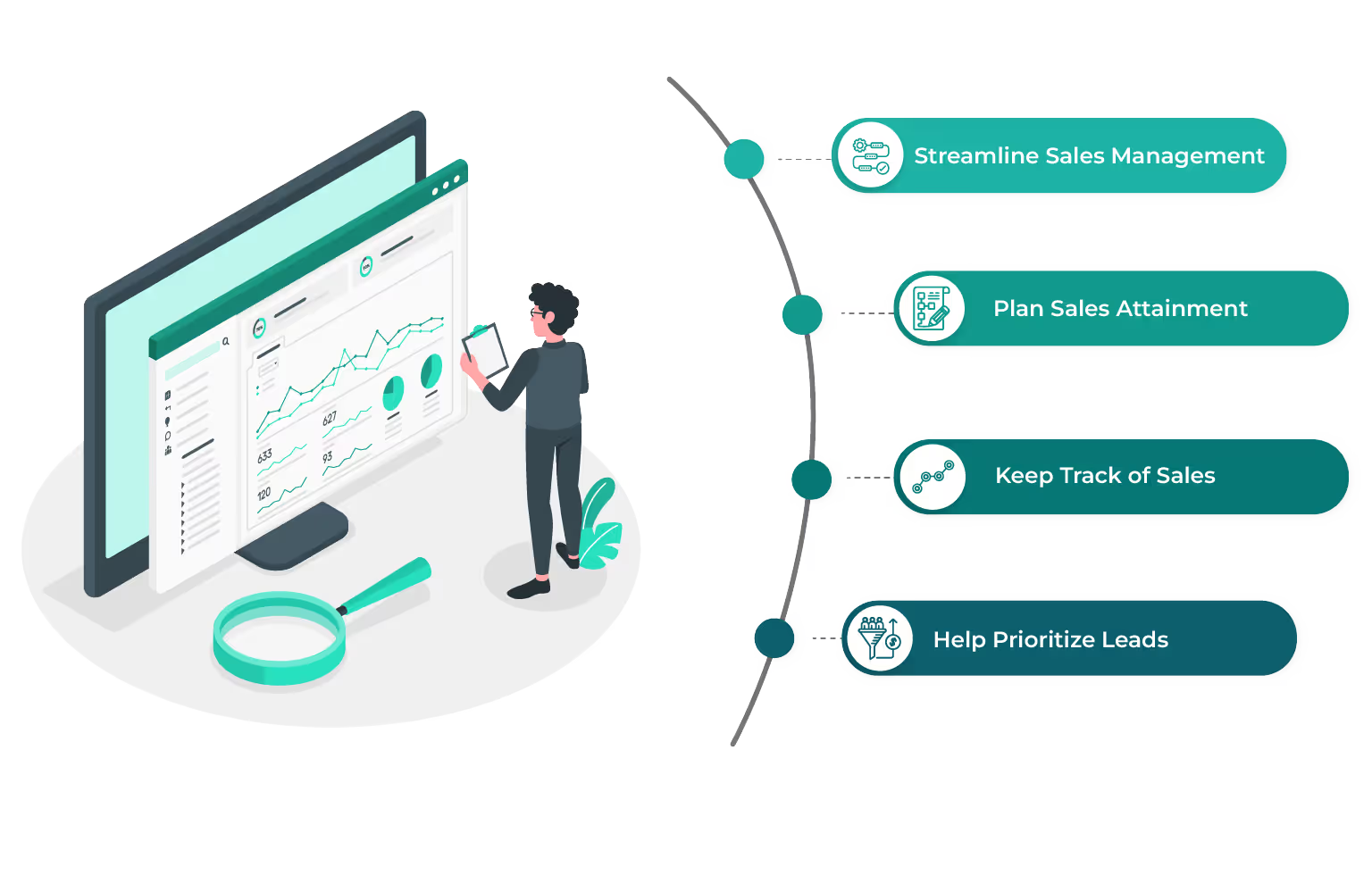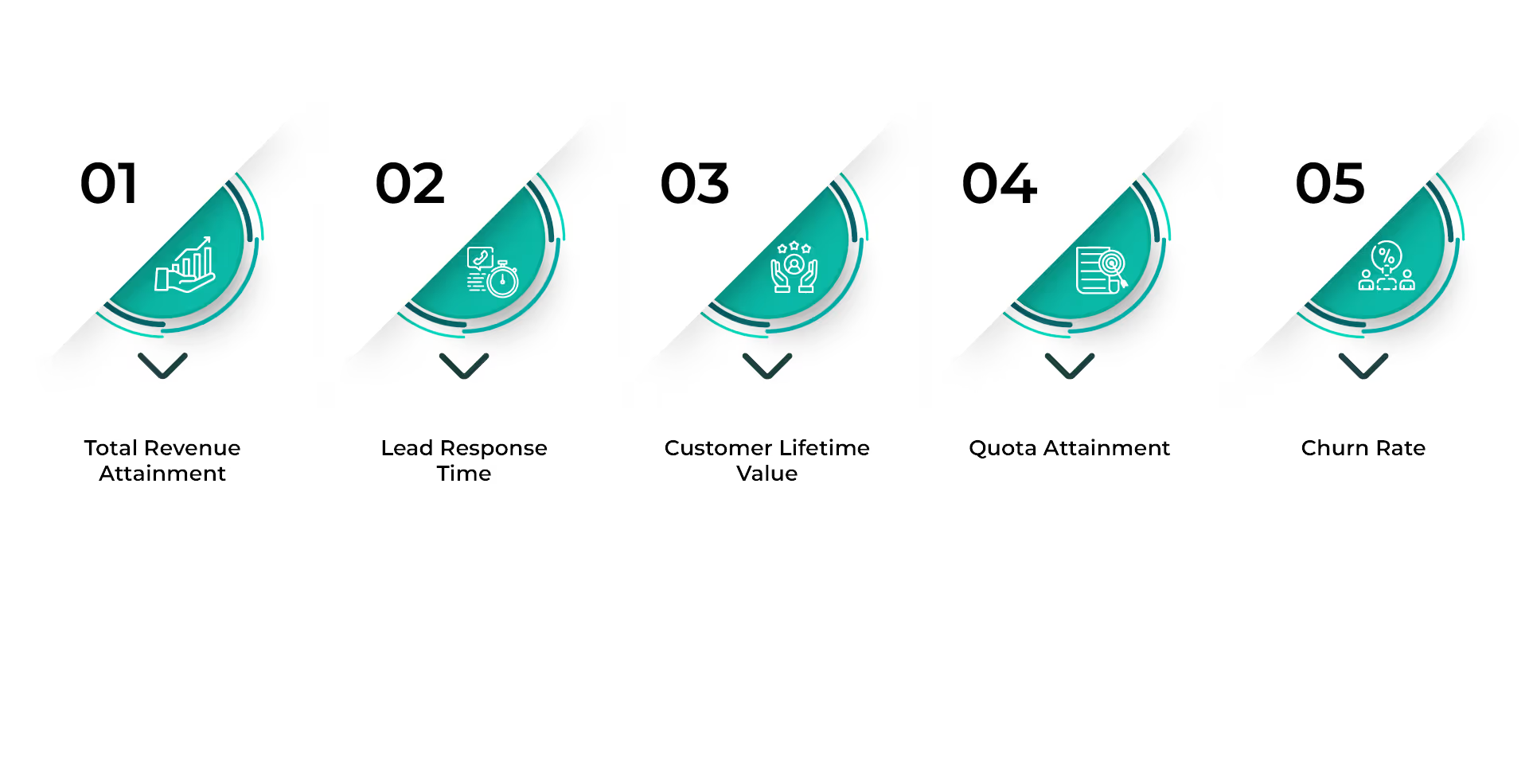Blog
Apply our Advanced Sales Tracker to Revolutionize Sales Management.
September 26, 2023

Key Insights
For what reasons does an organization opt for digital solutions in their business operations?
FinancesOnline pointed out that 40% of organizations opt for digital transformation to improve operational efficiency. While 35% incorporate digital tools to meet changing customer expectations.
The benefits of digital transformation also include improving new product quality, reducing product development costs, and the cost of poor quality, as well as tracking sales performance.
Digital incorporation is inevitable in the current business scenario considering the wide range of benefits in adopting a digital model into your operations.
So think about how your sales management will boost when the process undergoes a digital transformation.
In this article we will explore sales tracker, how to create a sales tracker template, the benefits of incorporating sales tracker in your operations, the features of an ideal sales tracker, and the sales metrics to follow for better tracking your sales process.
So scroll down for more.
What is a Sales Tracker?
A sales tracker is a tool that helps sales managers monitor and keep track of the sales progress made, sales revenue earned and sales performance achieved.
The data gained by tracking various sales metrics helps sales teams understand the progress made by their team and their performance and productivity. Analyzing these accurate data also helps them make informed decisions that bring desired results.
How to Create a Sales Tracker?
The general purpose of a sales tracker is to quantify the sales process and convert it into data that is easy to monitor and comprehend.
Hence, the first and foremost step to creating a sales tracker is to understand the metrics the client wishes to track and how they want the data to be represented.
A sales tracker is also a centralized repository where all the sales-related transactions are documented. It must be ensured that authorized personnel can easily access all the information regarding sales from the sales tracker, enhancing the efficiency of the entire sales process and seamlessly integrating with a powerful Sales Pipeline tool.
It must also be ensured that according to the client’s tracking requirement and preference of representing the data is available in ways that are easy for them to view and understand.
Here is how Kennect’s sales tracker implements these requirements into our solution.

Our sales tracker offers a variety of ways of representing the sales data. The collected data can be represented in the form of a bar graph, pie chart, or table chart according to the client's preference.
A sales tracker example for a pharma client can show sales data specific to a brand, on a customer level, or every month. This ensures that a senior-level manager can analyze the sales from various perspectives thereby providing a holistic view of the sales process.
Another feature that the Kennect sales tracker offers is highlighting the quota achievement. This means that if a salesperson has achieved more than 80 percent of their sales quota it will be highlighted in orange and if it's less than 80 percent then it will be marked red.
This calls the attention of the sales manager to note the sales performance and progress of each salesperson and provide them with coaching to help them close their deals and achieve their quotas.
In addition, senior officials have the option to download the required data into an Excel sheet or to “Email Me” directly to their mail address.
Through these features, Kennect provides clarity on the progress of the sale and monitors the salesforce performance to help companies incorporate ways to improve their operations and make informed decisions to rectify their shortcomings. The sales tracker can serve as a comprehensive sales performance template for organizations seeking effective monitoring and analysis tools.
How Does a Sales Tracker Benefit Your Business?
Incorporating a sales tracker offers a lot of positive results to your company's operations, especially when combined with a powerful sales commission calculator. Some of these benefits include:

Sales tracker monitors the sales performance and progress of each salesperson, their revenue generated, the percentage of sales quota achieved, etc. It gives a detailed picture of everything related to the sales process. This ensures that companies receive valuable insights to make informed decisions to optimize their sales operations. Additionally, the implementation of digital solutions, such as the benefits of MBO (Management by Objectives), can further enhance goal alignment and performance evaluation in sales management.
- Plan Sales Attainment
Sales tracker can track the sales attained by each sales rep. This helps sales managers monitor the progress made by their team, and provide coaching to help them maintain or improve their sales performance and achieve their quotas. For the sales tracks keeping track of their sales helps focus on their goal and strategize to achieve their targets.
- Keep Track of Sales
Sales is a competitive job where a salesperson, adhering to sales ethics and professionalism, will be in communication with multiple clients to generate leads and close them. A sales tracker will help sales reps keep track of all their potential clients and strategies, ensuring they maintain sales ethics and professionalism while moving them to the sales pipeline for faster conversion and closing of deals.
- Help Prioritize Leads
Sales tracker provides insight on the sales techniques that provide positive results in closing deals. By understanding the common customer behavior that leads to sales and applying sales techniques that guarantee conversion, sales reps can prioritize their leads for faster conversion rates.
Incorporating data-driven solutions like a sales tracker helps salesforce better manage their sales and make informed decisions that help optimize their operations. Utilizing a gross sales calculator alongside a sales tracker can provide even deeper insights into revenue generation and performance tracking.
For further reading on improving sales check A Guide to Optimising Sales Performance for the Sales Process.
What are the Features of an Ideal Sales Tracker?
An ideal sales tracker eases everyday sales management and helps better keep tabs on the progress of the sale.
An ideal sales tracker must ensure data visibility. It must make the sales team's task of collecting, documenting, monitoring, and visualizing the data easy.
A good sales tracker must make it easy to understand the sales data. Through highlighting, graphical representation, and other features, the collected data must be easily comprehended by anyone and everyone. Additionally, an ideal sales tracker should seamlessly integrate with a powerful leads tracker to enhance overall sales management.
The sales tracker must provide various viewing options. For example, the data must be available in pie, line, or bar graph. It must be available on a monthly quarter or yearly basis according to the customer's preference.
The collected data must be easily accessible to all authorized personnel. This includes being able to download the data into a sheet or directly mailing them to the respective email address.
Hence, the sales force must incorporate a sales tracker that offers multiple benefits to boost their sales process.
Important Sales Metrics That You Should Track
Sales trackers can monitor sales performance through various metrics. Some of the commonly used metrics include

- Total Revenue Attainment
Total revenue attainment refers to the total revenue brought in by the sales rep within a time period. It is calculated by multiplying the number of sales and the price of one sale.
- Lead Response Time
Lead response time refers to the average time taken by the sales rep to follow up on the lead who contacted your business. In most cases, an ideal response time is within 24 hours. The quicker you respond the higher the chance of closing the deal.
- Customer Lifetime Value
Customer lifetime value is the revenue that a company will provide throughout its association with you. The longer the CLV, the higher the worth of the sale. This includes their first purchase, repeated purchase, and the average timespan with your company.
- Quota Attainment
Each sales rep is assigned a sales quota at the beginning of the quarter. Quota attainment measures the percentage of quota achieved by the sales rep in a time period. The higher their quota attainment higher their incentive compensation as well.
- Churn Rate
Churn rate calculates the number of clients who leave your company within a time period. Especially for a subscription-based product where the contract needs to be revised regularly, the churn rate is a decisive factor that determines the growth of the organization.
These are a few of the various sales metrics that management uses to evaluate the profit of a sale and the performance of their salesforce. Taking data insights on these metrics will help organizations make informed decisions on their organizational growth.
To read more on metrics to follow check Customer Retention Metrics: A Comprehensive Guide to Boosting Business Success.
Conclusion
Work was often seen as a qualitative work. But with the current digital tools work has been accurately quantified thereby making performance evaluation objective.
Digital solutions offer valuable insights in the form of data so that it is easier for organizations to make informed decisions and plan their steps with precision, especially when it comes to optimizing sales process execution.
If a sales tracking solution can offer a wide range of benefits to your business operations; think about the advantage of incorporating digital solutions in all areas of your business.
One of the biggest influencing factors in sales management is incentive compensation. By automating sales commission management and utilizing a comprehensive sales monitoring system, you can keep track of your salesforce performance, calculate their incentives without error, and ensure there is no revenue leakage caused by discrepancies in commission accounting.
Kennect offers incentive compensation and sales performance management solutions to help create transparency and achieve operational efficiency. For more information, Book A Demo NOW!
ReKennect : Stay ahead of the curve!
Subscribe to our bi-weekly newsletter packed with latest trends and insights on incentives.
Thank you! Your submission has been received!
Oops! Something went wrong while submitting the form.
Your data is in safe hands. Check out our Privacy policy for more info











